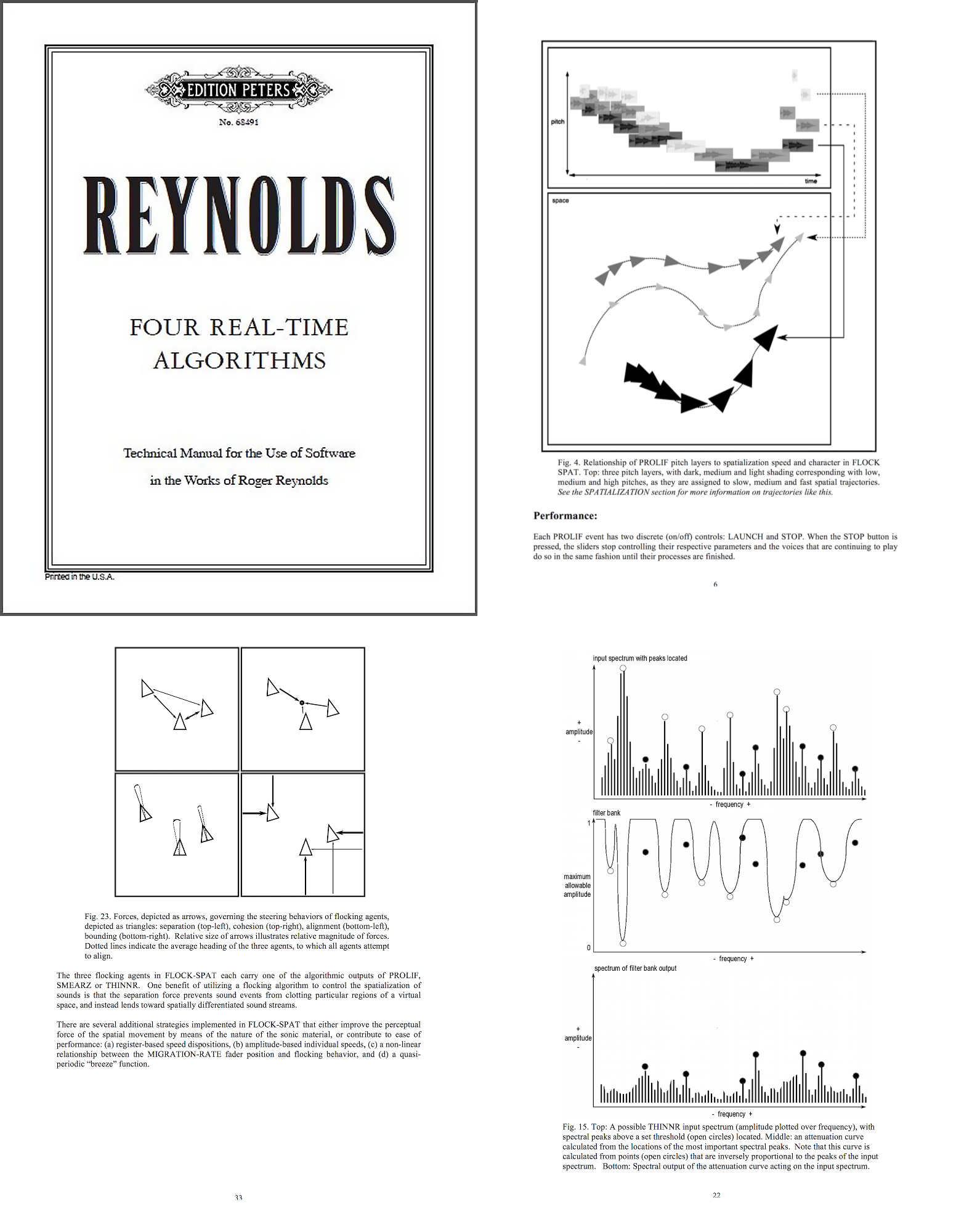Technical Manual, published by Edition Peters
Roger Reynolds, Jaime E. Oliver La Rosa and Paul Hembree
Introduction from the Manual:
"This document describes the algorithms and performance strategies of the live electronics developed for Roger Reynolds’s SEASONS project, and subsequently used in other works including Dream Mirror, MARKed MUSIC, Toward Another World, Positings, george WASHINGTON, and FLiGHT. The algorithms presented here were conceived by Reynolds and developed in collaboration with several programmers. Pei Xiang did an initial version of the SMEARZ algorithm. Ian Saxton programmed the PROLIF, SMEARZ, and MATRIX algorithms in Pd while involved in the realization of Reynolds’s multiple-percussion work Sanctuary. The further development of these algorithms and their specific application in SEASONS was accomplished by Jaime E. Oliver La Rosa, including their adaptation for live performance with a controller (also in Miller Puckette’s Pd) and the development of the THINNR algorithm. Paul Hembree has continued work optimizing the algorithms and adjusting their spatialization strategies. This document represents the current state of the software (November, 2014), and conceptual approaches to performance with a computer. Development is ongoing.
These algorithms were at first thought of as processes with relatively pre-determined trajectories. PROLIF offered a gradual proliferation from a singular source sample towards a wide diversity of flocking transformations (the process is reversible); SMEARZ proposed a radical temporal expansion and blurring of its source material while retaining the source’s morphology; MATRIX offered arbitrarily complex rhythmic patterns based on a temporal fracturing and patterned replication of source material, also manifesting the original morphology of the source sample, though temporally expanded. THINNR was conceived from the start as a real time algorithm that allows for radical temporal expansion and formant-like filtering carried on by two simultaneously and independently evolving processes.
A principal goal of the electronics in Reynolds’s work has been to incorporate the computer musician as a performer and therefore, as member of an ensemble. Although, in the original algorithms, the variable nature of several internal processes offered change from realization to realization, there was little opportunity for dynamically controlled alterations during performance. In the current versions, we have chosen several parameters for each algorithm that are subjected to live control. Combinations of available parameters, in turn, provide the computer musician performer with the ability to start, stop and change processes dynamically in interactive response to other members of an ensemble."
Available from Edition Peters.
Preview:
